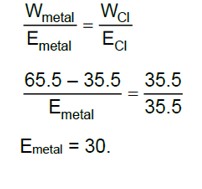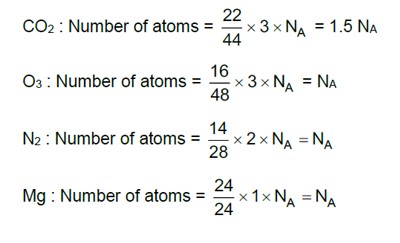If two elements can combine to form more than one compound, the masses of one element that combine with a fixed mass of the other element, are in whole number ratio.
If two elements can combine to form more than one compound, the masses of one element that combine with a fixed mass of the other element, are in whole number ratio.
-
1 Answer
-
This is a Short Answer Type Questions as classified in NCERT Exemplar
(a) Is this statement true?
Ans: Yes the given statement is true
(b) If yes, according to which law?
Ans: Multiple law of proportions: According to the Law of Multiple proportions, when two elements combine to generate more than one compound, the weights of one element that combine with a fixed weight of the other are in a ratio of tiny whole numbers.
(c) Give one example related to this law
Ans:
C (g) + O (g) -> CO (g)
12 g 16 g 28 g
C (g) + O2 (g) -> CO2 (g)
12 g 32 g &n
...more
Similar Questions for you
In the medical entrance test NEET, there can be 1 to 3 questions from this chapter. Some year, the Chemistry section of NEET has only one question from this chapter and in some other years, there can be 3 questions.
The following are the key concepts of this chapter: Compound, Elements, Rules, Law of conservation of mass, Addition and Subtraction, Atomic Mass, Law of multiple proportions, and Molecular Mass.
As the name suggests, the first chapter of the NCERT Class 11 Chemistry introduces various basic concepts of chemistry, such as the definition and importance of chemistry, atomic matter and molecular masses, the mole concept, laws of chemical combination, empirical, stoichiometry, and molecular formulas. It also includes the concepts of molarity and molality.
Taking an Exam? Selecting a College?
Get authentic answers from experts, students and alumni that you won't find anywhere else
Sign Up on ShikshaOn Shiksha, get access to
- 65k Colleges
- 1.2k Exams
- 679k Reviews
- 1800k Answers


